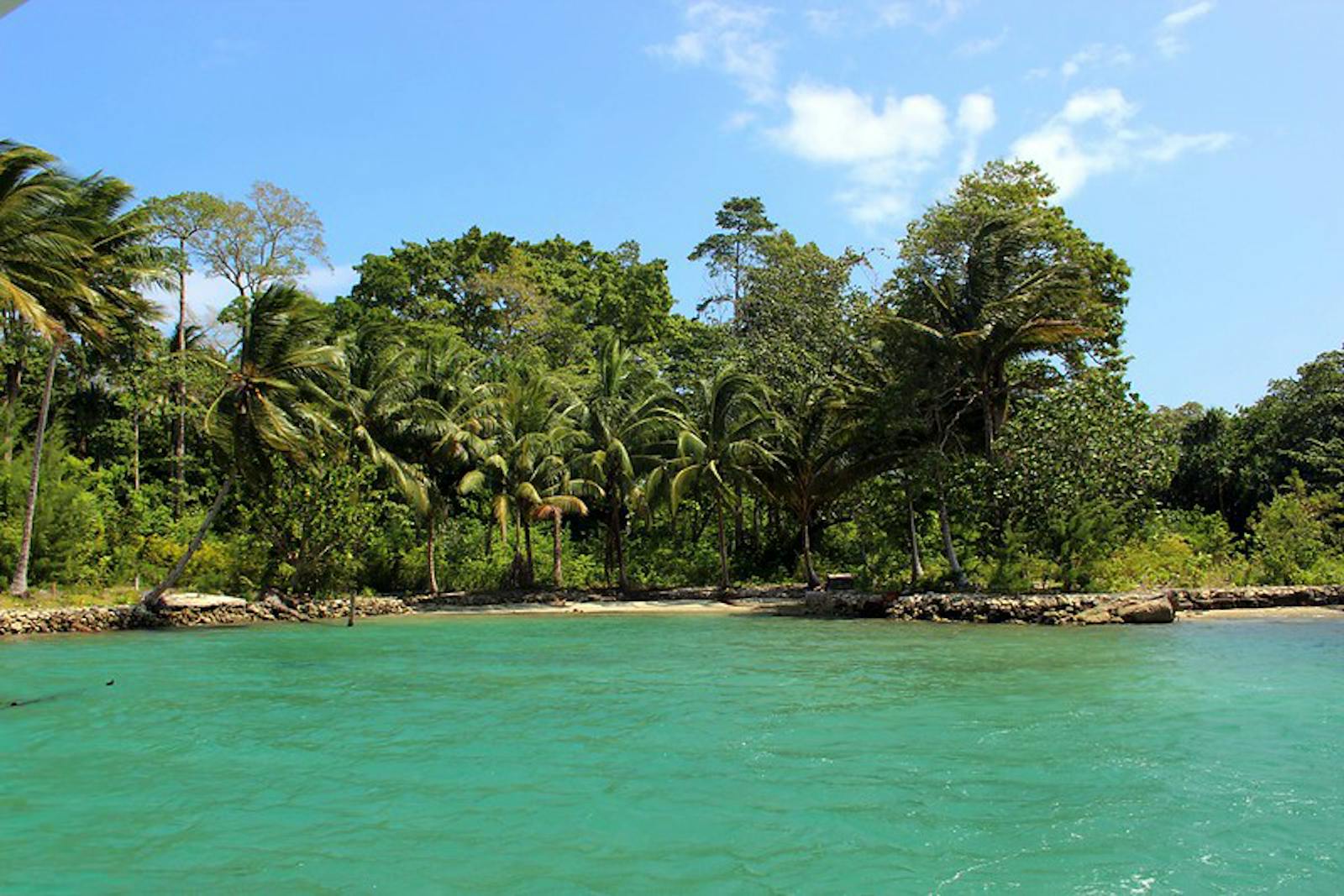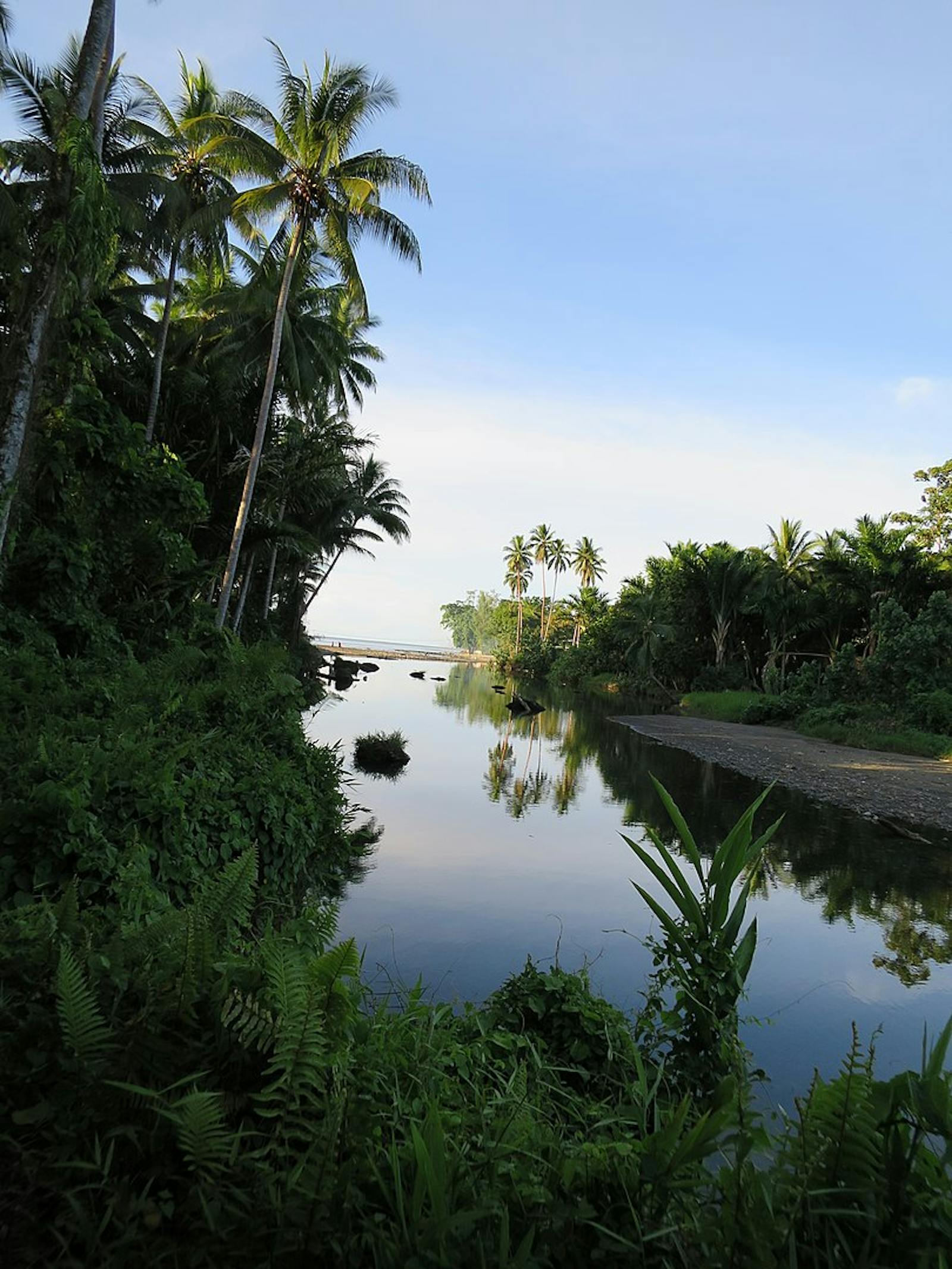Solomon Islands Rainforests
The ecoregion’s land area is provided in units of 1,000 hectares. The conservation target is the Global Safety Net (GSN1) area for the given ecoregion. The protection level indicates the percentage of the GSN goal that is currently protected on a scale of 0-10. N/A means data is not available at this time.
Bioregion: Solomon Islands (AU12)
Realm: Australasia
Ecoregion Size (1000 ha):
3,593
Ecoregion ID:
152
Conservation Target:
89%
Protection Level:
0
States: Solomon Islands, Papua New Guinea
The Solomon Islands are an arc of high oceanic islands clothed in rainforests and surrounded by blue coral-filled seas. Parrots of blazing colors sweep down slopes, giant tree rats search mountain canopies, and giant prehensile-tailed skinks cling to trees. These verdant and isolated islands are known for their many species of pigeons, including the now-extinct giant ground Choiseul pigeon, large furry arboreal rats, a diverse bat fauna, and richness in giant land snails, lizards, and frogs. Many species of plants and animals occur only on a single island, and a good portion of the fauna is found only in the archipelago. For example, 69 bird species occur nowhere else.
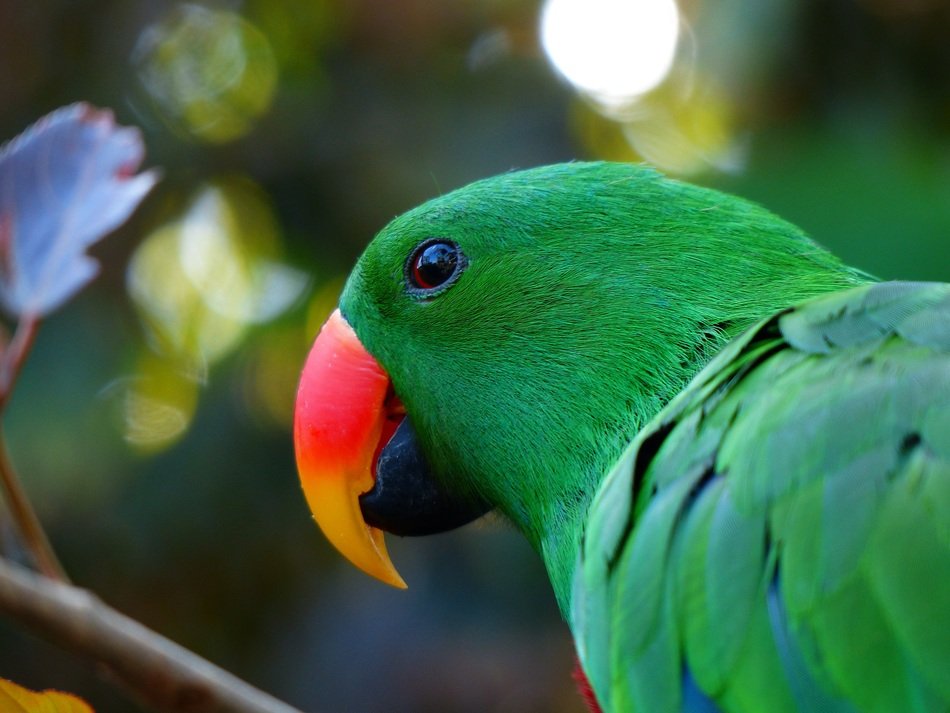
The flagship species of the Solomon Islands Rainforests ecoregion is the Solomon Islands eclectus parrot. Image credit: Image credit: Pixabay, Hans (CC by 4.0)
This ecoregion consists of tropical lowland and montane forests on Bougainville and Buka Islands in PNG and most of the island nation of the Solomon Islands (not including the Santa Cruz Group). The climate of the Solomon Island is tropical wet. Only small portions of a few of the islands extend beyond 1,000 meters in elevation. The mountains on Guadalcanal reach over 2,000 meters. The Solomons result from the subduction of the Australian tectonic plate beneath the Pacific tectonic plate, and the islands are a very active tectonic area. The surface geology of the islands consists predominantly of volcanic rocks, with some metamorphic rocks, uplifted coral islands, and recent alluvium in the lowlands. The islands increase in age from northwest to southeast.
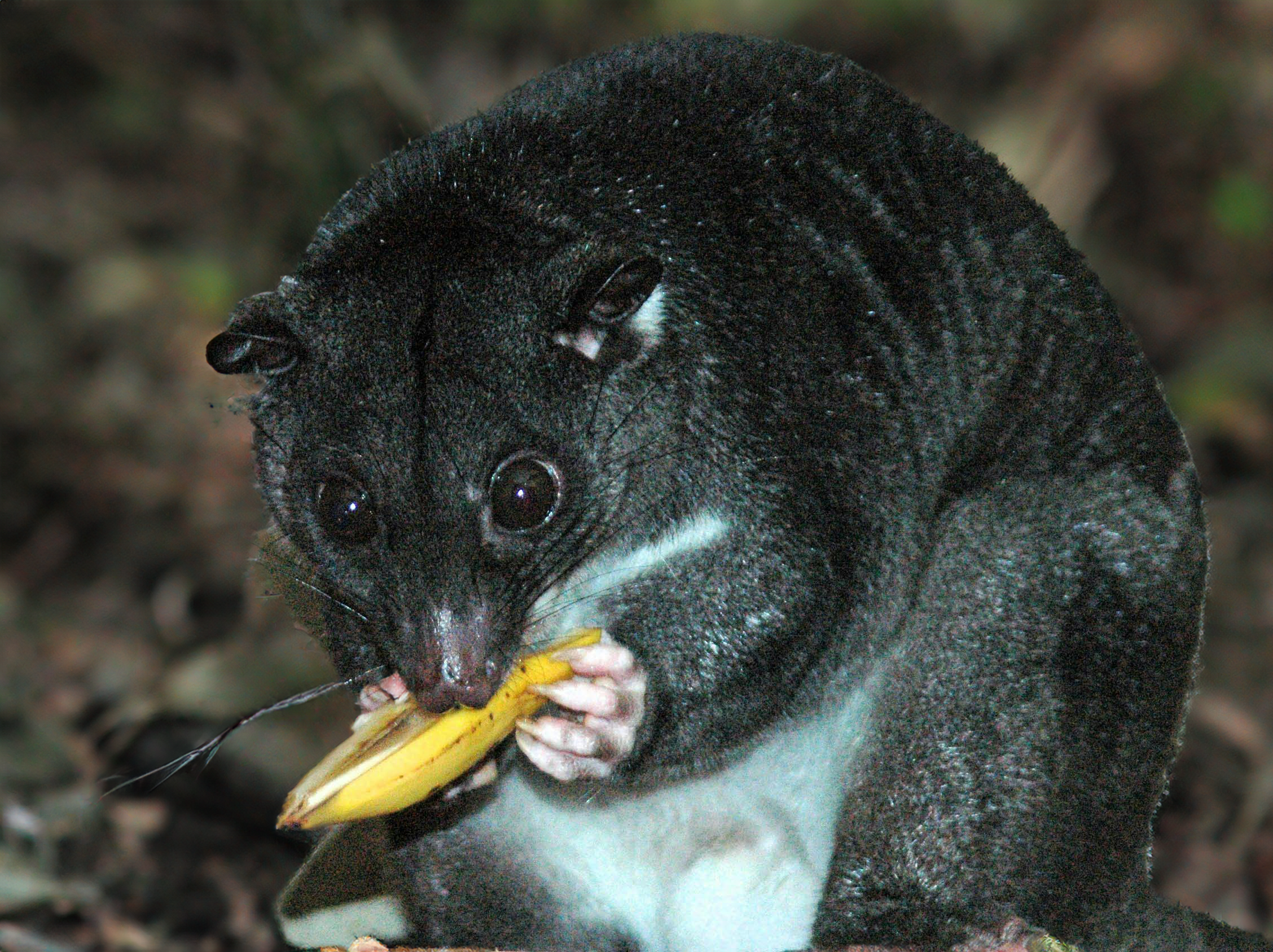
Ground cuscus. Image credits: Animalia (Public Domain)
The islands support coastal strand vegetation, mangrove forests, freshwater swamp forests, two types of lowland rain forests, seasonally dry forest and grassland (only on Guadalcanal), and montane rain forest. Bougainville also contains a floodplain forest, a transitional submontane rain forest, and forest on ancient limestone. The most widespread vegetation type is lowland rainforest. The canopy is uneven due to frequent landslips and treefalls often associated with the island’s heavy rains. Common trees include Calophylum kajewskii, C. vitiense, Dillenia salomonensis, Elaeocarpus sphaericus, Endospermum medullosum, and Parinari salomonensis.
Some groups of low-diversity forests are found in unusual soils, including limestone (Vitex cofassus and Pometia pinnata), flooding (Pterocarpus indicus and Terminalia brassi), or ultramafic soils (Casuarina papuana, Dillenia crenata, Syzygium, or Dacrydium). Seasonally dry forest is found only on the leeward (north) side of Guadalcanal. Rhododendron, Podocarpus, and Metrosideros are some montane tree genera. Interestingly, two important Indo-Malayan tree families, Fagacae and Dipterocarpaceae, are absent in the Solomons.
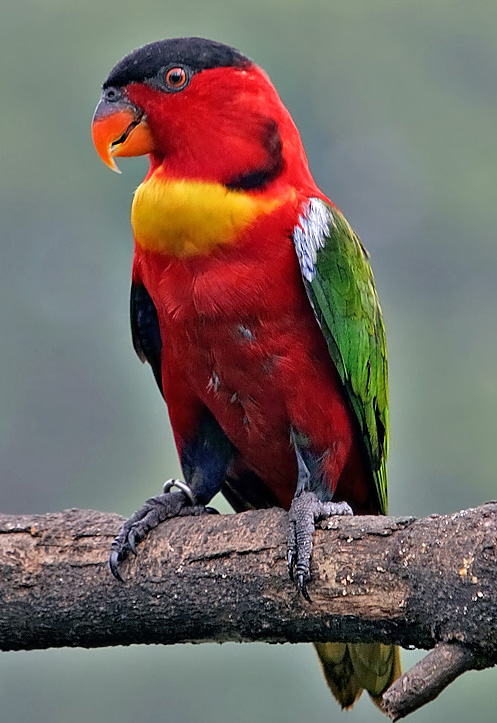
Yellow bibbed Lori. Image credit: Wikipedia, Doug Janson (CC by 3.0)
Except for the fruit bats, the Solomons, and adjacent Bismarcks have much lower mammal diversity than New Guinea. The Solomons, unlike New Britain in the Bismarcks, support no marsupials. Nevertheless, 26 out of the island’s 47 mammals occur nowhere else. These are mainly bats and rats, including some larger, furry, tree-living rats. The archipelago supports 199 bird species and has the world’s highest number of endemic bird species (sixty-nine) for any identified Endemic Bird Area. Seven bird genera are endemic, reflecting the pronounced isolation of the islands and within the archipelago.
A few smaller protected areas exist: East Rennell World Heritage Site, Kolombangara Forest Reserve, Komarindi Catchment Conservation Area, and Queen Elizabeth National Park. They cover only 23 percent of the land, with a combined area of 660 square kilometers. There are 36 Key Biodiversity Areas identified for the Solomon Islands, including Kunua Plains and Mount Balbi, Mount Maetambe — Kolombangara River, Gizo, Kolombangara Upland Forest, Marovo Kavachi, Guadalcanal Watersheds, East Rennell, East Makira, Nendo, and Vanikoro.
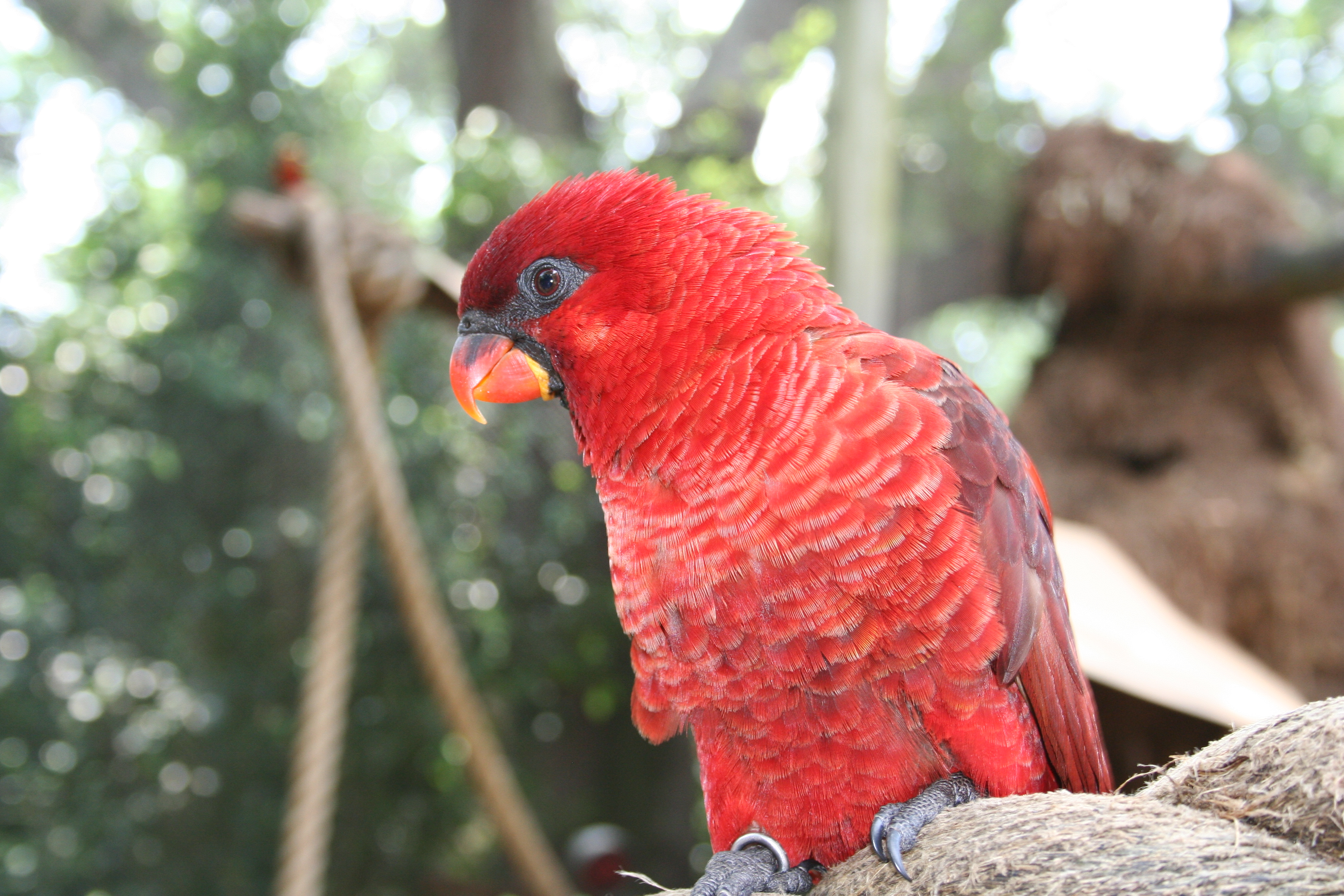
Chalcopsitta cardinalis. Image credit: Wikipedia, Aaron Wormus (CC by 2.0)
Much of the lowland forest under 400 m has been cleared for subsistence agriculture, settlement, and copra plantations, and much lowland and foothill forest has been degraded and laced with roads through industrial logging. The logging roads facilitate black rats, feral cats, feral dogs, and other invasive species to enter intact forests and prey on native species of birds, snails, rodents, and other wildlife.
Priority conservation actions for the next decade
- Establish Community Conservation Areas, such as the current Tetpare CCA, and apply the Ridge to Reef conservation concept to protect Key Biodiversity Areas (KBA) throughout the islands more effectively.
- Restrict any form of commercial logging in or near KBAs altogether.
- Monitor and control the impact of introduced and invasive species to native wildlife and habitats on the islands.
-
-
- CEPF. 2012. Ecosystem Profile: East Melanesian Islands Biodiversity Hotspot. Critical Ecosystem Partnership Fund, Washington DC.
- Davis SD, VH Heywood, AC Hamilton (eds). 1994-1997. Centres of plant diversity: a guide and strategy for their conservation. World Wide Fund for Nature (WWF) and ICUN - World Conservation Union, Cambridge.
- Mayr E, J Diamond. 2001. The Birds of Northern Melanesia: Speciation, Ecology, and Biogeography. Oxford Press, Oxford.
-
Cite this page: Solomon Islands Rainforests. Ecoregion Snapshots: Descriptive Abstracts of the Terrestrial Ecoregions of the World, 2021. Developed by One Earth and RESOLVE. https://www.oneearth.org/ecoregions/solomon-islands-rainforests/
-
